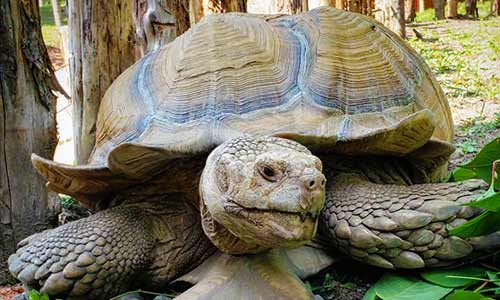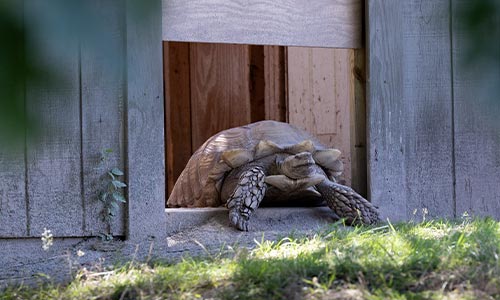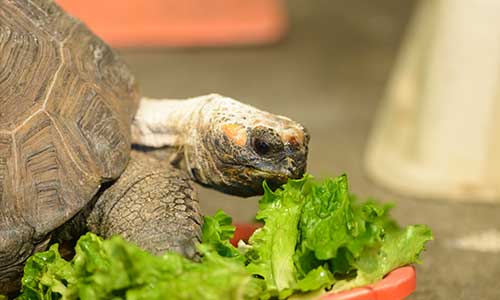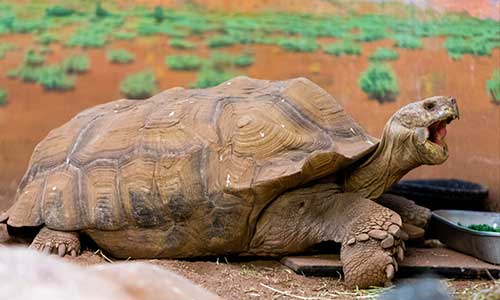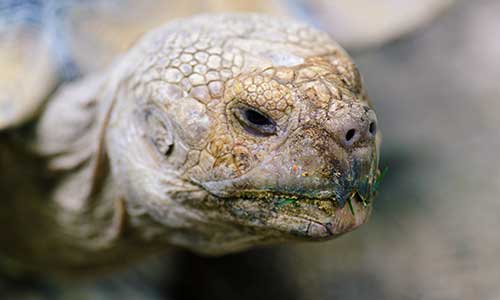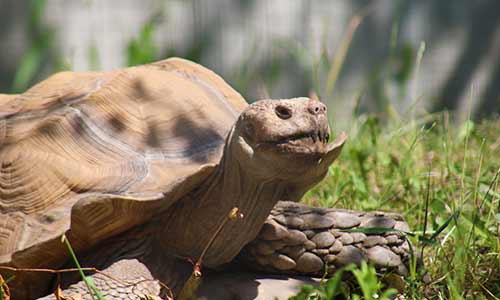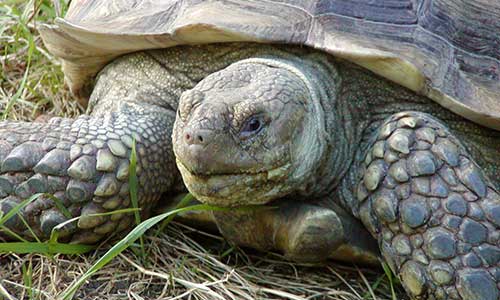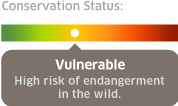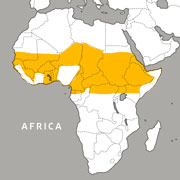Appearance:
The African spurred tortoise is a desert-dwelling species, camouflaged by its sandy coloration, thick yellow-brown skin and brownish carapace (upper shell). Its broad, oval carapace displays serrations at the front and back margins, and growth rings on each scute become marked with age. Large overlapping scales cover the front surface of the forelimbs, while the hind surface of the thigh has two or three large conical spurs, from which the species earns its name. This species has thick skin, which helps reduce fluid loss. Male tortoises have slightly thicker tails and more concave plastrons than females.
African spurred tortoises are the third largest tortoise species. At hatch, African spurred tortoises will measure around 2 inches long and weigh 0.06 pounds. They will continue to grow in size until around 10 years of age. They stop growing by 15 to 20 years of age.
Size:
- Length: 17 – 31 inches
- Weight: On average, 79 - 110 pounds, but they can weigh up to 220 pounds
Reproduction:
African spurred tortoises are sexually mature at age 15, when their carapace is about 10 inches in diameter. They typically mate June through March, with the main season being September to November, after the rainy season. These tortoises are very aggressive with each other. Males will fight for females by ramming themselves against their opponent in an attempt to flip them over.
Once a female mates, she develops eggs that fill her body cavity and eats less frequently. In the fall, she will look for a nest location. To create a nest, a female tortoise digs a divot in the ground, 2 feet in diameter and 7 - 14 inches deep. She may create up to five nests before selecting one to lay her eggs in. After selecting a nest, she will lay roughly one egg every three minutes until 15 to 30 have been laid. The eggs will then be buried and incubate underground for eight months. After hatching, the babies crawl to the surface of the nest through the dirt and emerge after a period of between 24 and 72 hours.
Median Life Expectancy:
50 years
Habitat/Range:
African spurred tortoises live in dry hot areas from desert to savanna. They are found along the southern edge of the Sahara.
Diet:
These tortoises will eat plant material such as leaves and grasses. They like the leaves of morning glory plants and will also eat succulent plants for water intake.
Behavior:
African spurred tortoises communicate mostly through physical displays and vocals. They will ram and bite when threatened, especially males. To avoid confrontation, individuals may hiss as a warning or retreat to a burrow. Females will also make a croaking sound, thrash their rear ends, and/or raise and drop their shell on the ground to make a loud noise.
These tortoises dig burrows to avoid being in the hot sun and to stay dormant in during the dry season. In the wild, they may spend the hottest part of the day in these microhabitats. Burrows may average 30 inches in depth and some dig tunnel systems extending 10 feet or more underground.
When temperatures exceed 104 F (40 C), the African spurred tortoise will begin to salivate heavily, smearing the saliva on its forearms to help cool itself down.
Threats
Urbanization, desertification, land overuse, pet trade, and harvesting for medicinal purposes.
You can help!
You can help the spurred tortoise by being conscious buyers and making sustainable/environmentally friendly choices when shopping. Also, before getting a tortoise as a pet, consider the lifelong commitment of ownership and if not deterred, adopt rather than buy a juvenile.
Did you know?
- These tortoises are named for the two or three cone-shaped spurs on the back of each thigh.
- All other tortoises in the centrochelys genus are extinct. African spurred tortoises are most related to tortoises in the order Cryptodira, who are able to draw their whole necks and head into their shell.
- These tortoises can survive weeks without water and can drink 15% of their body weight in one sitting.

